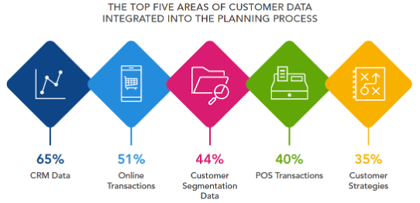Knowing the customer better than the competition empowers your organization to create better assortments, personalized promotions and marketing campaigns to drive sales and enhance customer loyalty. The ability to understand customers, predict what they want to purchase and even shape their buying behavior is driving the need for more extensive analytics.

12 Dirty Little Secrets Retailers and Manufacturers Need to Know About Inventory Optimization
Get the low-down on the secrets retailers and manufacturers need to know about inventory optimization.
Challenges to Analyzing In-Store and Online Data
Many companies have an abundance of in-store and online data that can be used to inform business decisions but analyzing this information can be challenging. Traditional merchandise and financial planning systems, including manual data entry systems, often generate only partial results which can be hard to interpret and can ultimately lead to suboptimal business decisions. Despite advances in technology, many organizations are still making inventory decisions based on data that has been manually or automatically entered into spreadsheets. However, some companies are using advanced analytics to inform their decisions.
What is Advanced Analytics?
Advanced analytics is an umbrella term for a group of high-level methods and tools to help get more out of data. The predictive capabilities of advanced analytics can be used to forecast trends, events and behaviors. This gives organizations the ability to perform advanced statistical models such as “what-if” calculations, as well as to future proof various aspects of their operations.

The Importance of Real-Time Data
The availability of real-time collecting and access to valuable business data across multiple customer touchpoints changes how and when planning decisions are made. Whether mobile, in-store, online, or originating via social media or through location services, a wealth of information is now available to inform all aspects of organizational decision-making. These interactions produce valuable data that can be instrumental when predicting demand and informing buying and planning decisions.
Incorporating Insights in Planning and Allocation
Evaluating and incorporating all available insights in planning and allocation decisions greatly enhances outcomes. Merchants should consider using every data point available in the planning process, including business intelligence, inventory movement, shopping behavior, customer relationship management (CRM), social media, clienteling data and customer demographics/segmentation.
The consolidation of various data points enables a unified, comprehensive view of customers and products to help organizations make smarter product decisions and offer more personalized customer experiences.
For more information on customer analytics, download the Advanced Analytics Special Report based on enVista’s 2021 Inventory Optimization Survey.
Let’s have a conversation.TM







